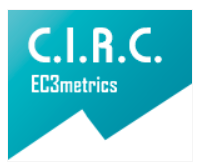The role of the adult in the communication of congenitally deafblind children
El papel del adulto en la comunicación de niños sordociegos congénitos
Main Article Content
The purpose of this project is to identify the characteristics and interactive behaviors used by deaf-blind from the recognition and valuation of their own strategies related to human adaptation processes. Results will allow validating and re-building knowledge related to the influence of this shortage in generating strategies, communication and cognitive behaviors which permit them to
in a interact better way with the physical and social world they are surrounded by. In addition this contributes to the transmission of the real imaginaries of this population so in the future they could he accepted and known group by members of society and to achieve their inclusion without any discrimination in different social contexts.
Downloads
Publication Facts
Reviewer profiles N/A
Author statements
Indexed in
- Academic society
- Bogotá: Corporación Universitaria Iberoamericana
- Publisher
- Bogotá: Corporación Universitaria Iberoamericana
Article Details
Axelrod, C (2005) A. Supporting High Quality interactions with students who are deafbrind. Part One: A summary of current research. TSBVI. Texas Deafblind Outreach. Recuperado el 8 de Octubre de 2005, de www.tsbvi.edu/Outheach/seehear/fall04/deafblind.htm-30K
Axelrod, C. (2005)B. Supporting High Quality interactions with students who are deafbrind. Part Two: A summary of current research.TSBVI. Texas Deafblind Outreach.
Craig A. (2005). Apoyado interaciones de alta calidad con estudiantes sordo ciegos. Edicion de invierno/ VER /OIR, Simposio de sordo ceguera de la dia 25 y 26 febrero 2005 Austin. Recuperado el 30 Septiembre de 2005, de www.nud.dk/en/publikation/enpublictation,htm./
Mcinnes, J ; y Treffy, J. (1994) Guía para el desarrollo del niño sordociego. México: Siglo XXI Editores.
Miles, B (2002). Perspectiva General sobre la Sordo-ceguera. Centro de Información Nacional sobre Niños que son Sordos y Ciegos. Centro nacional de Helen Keller. Escuela Perkins para ciegos. Recuperado el 14 de Octubre de 2005, de Sordoceguera. Org/solo%20texto/Biblioteca%20virtual/Publicaciones.htm.
Nafstad, A; Rodbroe, I (1997) Congenital Deafblindness, interaction and development towards a model of intervention. En: Communication and congenital deafblindness. Deafblind International. France.
Nafstad, A; y Rodbroe, I (1999)A. Co-cocreating communication with persons with congenital deafblindness. Skadalen Centre Norway. Recuperado el 8 de Octubre de 2005, de www.icevi.org/publications/ICEVI-WC2002/papers/02-topic/02-macwilliam.htm-25k-3Nov.2005.
Nafstad, A; y Roadbroe, I (1999) B. Construyendo juntos la comunicación. Conferencia. Aalborgskolen, Dinamarca., Noruega. NUD,Dinamarca. 19 de febrero de 1999.
Serpa X; y Amaral (2003). Sordo-ceguera. “ponencia sobre la definición, generalidades, clasificación, causa de la sordo-ceguera y trabajo con familias, evaluación, comunicación educación y rehabilitación de personas sordo-ciegas”. Recuperado el 15 de Octubre de 2005, de http://www.sordoceguera.org/Biblioteca-virtual/publicacionesparte4.htm.
Souriau E. (2001). V Congreso Internacional de la Federación latinoamericana de semiótica. Recuperado el 8 de Octubre de 2005, de www.plataforma.ichile.cl/fg/semestre1/-2003/comunic/modulo5/clase8/doc/japoanim.doc.









